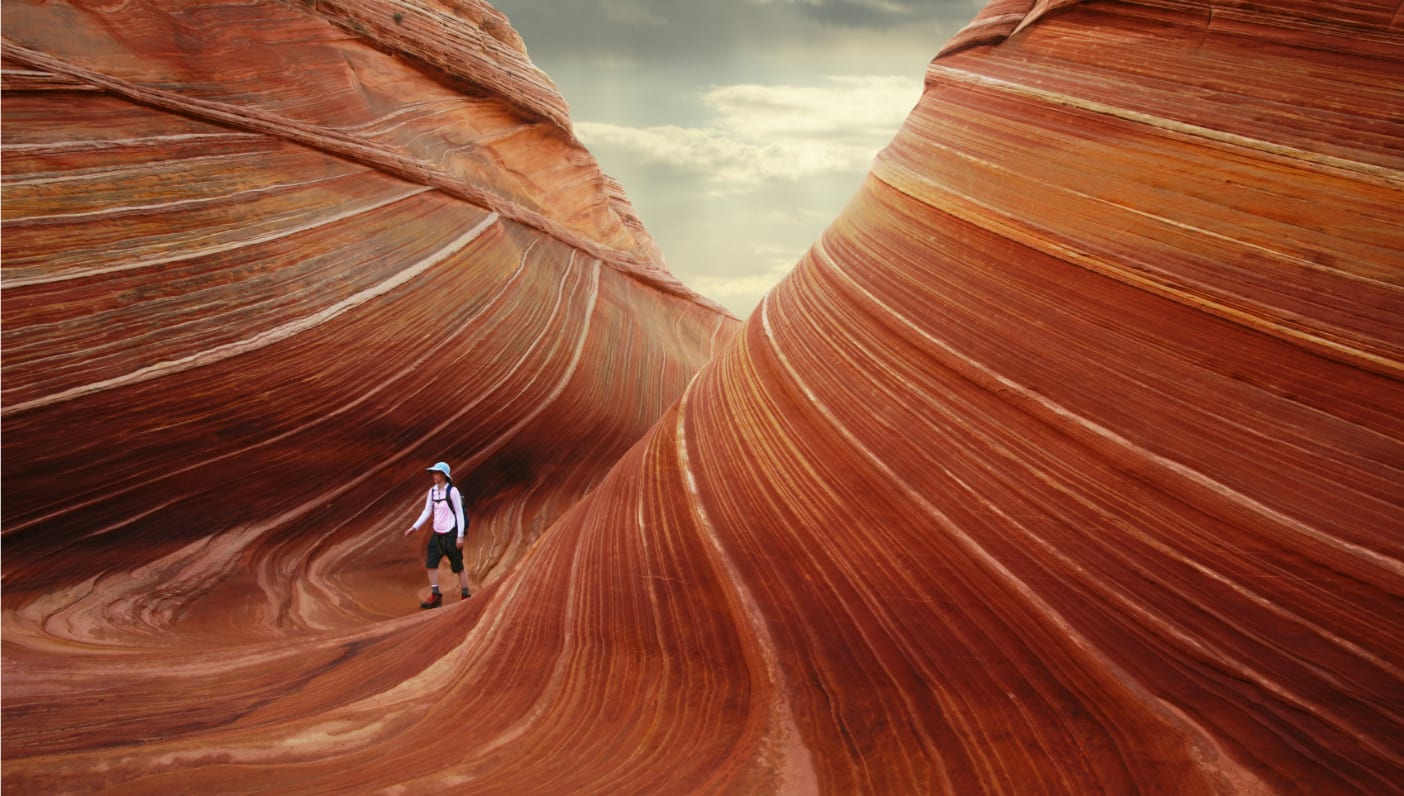
My training as a geologist has taught me the beauty of slowing down, of appreciating the deliberate and easy magnificence of our natural world. In modern life we’re often caught in the moment, trapped in a loop of technology-mediated instant feedback and gratification. Within this loop we lose our horizon and become swamped by feelings of being time poor.
Scanning the natural landscape for tales of deep time has enabled me to gain perspective on my personal horizon; to slow down, accept my own ephemerality, and connect with the world around me.

It was over a decade ago that I began my training and realized that the natural landscape tells stories to those who listen. Since then I have been listening to landscapes around the world: The ancient red center of Australia speaks of witnessing the earliest life on Earth. Permafrosted sand dunes in Antarctica whisper about their struggle for freedom from the ice. The Chilean Altiplano breathlessly chronicles a voyage from ocean floor to 4,500 meters that has left it bent and buckled, but not beaten.
I live in the Taupō Volcanic Zone of New Zealand—a north-easterly gut torn open by plate tectonics, relentlessly scarred and covered over by volcanic eruptions, and marked at each end with active volcanos (Mt Ruapahu is the south sentinel and White Island the north). This is a young landscape bubbling with life, chattering about slow constant change punctuated by the catastrophic.
My own life journey has been defined by constant gradual change cut though by the catastrophic, a parallel which perhaps explains why it felt right to settle here.
The difference between us, however, is that the landscape experiences time at a greater scale and slower pace than is possible from my human viewpoint.

The value of connecting to our landscape is well-known to ancient cultures. New Zealand’s Maori people trace their genealogy back through human ancestors to the significant rivers and mountains of their homelands, and then beyond to the universe. This genealogy is known as whakapapa. Recounting whakapapa is a key part of establishing identity and the relationships between whanau (extended family), hapū (tribe formed by a number of related whanau), and iwi (federation of hapū sharing distant kinship).
Without such context and strong connection between people and place, we are all vulnerable to feelings of dispossessed emptiness and left scrambling to plug the void with things and noise.
Traveling a path that breaks the loop will strengthen your connection with people and place, and requires only a few simple steps:
- Slow down
- Connect with others
- Connect with a dynamic landscape
- Plant your feet on the soil
- Find the horizon
- Gain perspective on how you are both at one with and separate from your landscape
- Listen carefully for new stories
Only when we release ourselves from the constraints and demands of modernity are we able to find our roots. When we have done this, our personal horizon becomes more clear and we find ourselves time rich.
—
 Irene Wallis is a geologist who is passionate about the environment, our place in it, and green energy. She currently works on geothermal energy projects at home in New Zealand and abroad. Irene can also be found out exploring the world by bicycle, and loves the sense of connection that comes from slow travel. Find her at freewheelingsoul.com.
Irene Wallis is a geologist who is passionate about the environment, our place in it, and green energy. She currently works on geothermal energy projects at home in New Zealand and abroad. Irene can also be found out exploring the world by bicycle, and loves the sense of connection that comes from slow travel. Find her at freewheelingsoul.com.